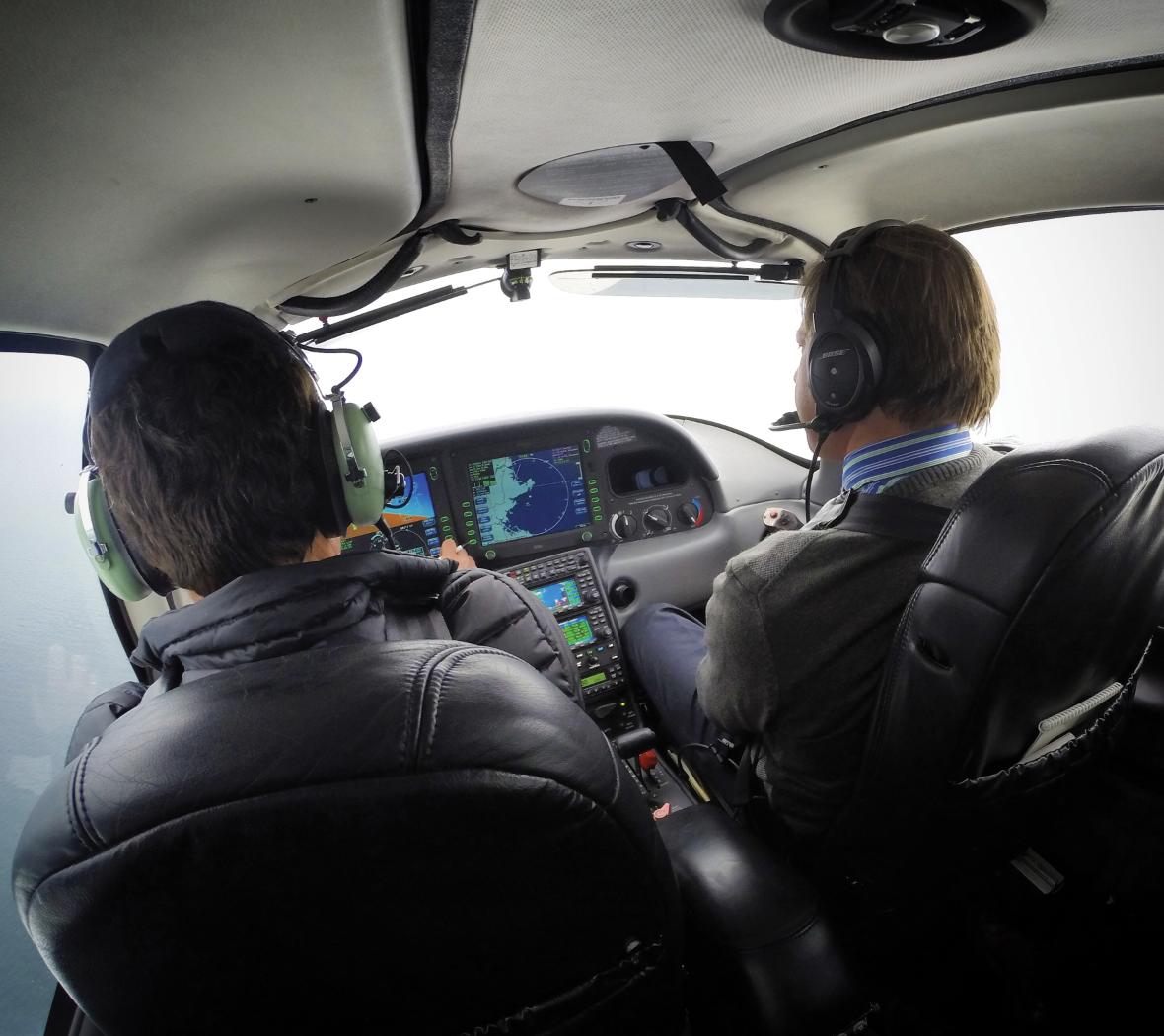Is Owning Safer?
Pilots decide to buy their own airplane for a variety of reasons. It could be a business decision, helping ensure coverage of a relatively wide sales area, or perhaps an aerial photography business. Specialized flight training-like acro, or a quicky instrument rating-also can be a reason. Recreation or personal transportation is yet another. One of my major motivations was safety.
Pilots decide to buy their own airplane for a variety of reasons. It could be a business decision, helping ensure coverage of a relatively wide sales area, or perhaps an aerial photography business. Specialized flight training—like acro, or a quicky instrument rating—also can be a reason. Recreation or personal transportation is yet another. One of my major motivations was safety.
The deal was cinched while flying a cross-country on a cold, moonless October night. My logbook shows a departure from Richland, Wash., at 2200 PST and arriving in Idaho Falls, Idaho, at 0230 MST. The note in the remarks section indicates the attitude indicator failed halfway along my route over the vacant Idaho wilderness. It was one of my last flights logged in a rental plane.
The Renter's Dilemma
And therein lies one of the obstacles to general aviation mass appeal: Vacuum pumps stop sucking, alternators stop charging, starters stop engaging, door latches stop holding and instruments occasionally fail regardless of who owns the airplane. With about 150 hours logged in the rental plane, I had experienced most of these modes of failure. It may just be that I am a control freak, but ownership sounded safer because it would put me in the driver's seat on aircraft maintenance decisions while also giving me a chance to become more familiar with a single plane and its systems.
Reflecting on my experience owning several airplanes over the years, I think my logic was sound, but I also have learned there are ways ownership can become decoupled from safety.
Ownership Benefits
Perhaps the biggest safety gain from ownership is familiarity. When you own a plane and fly it regularly, you get to know how it performs, what different power settings and pitch attitudes yield in terms of speeds, fuel burn and the view over the cowl. Even with a good ANR headset, and perhaps because of it, you get to know what the engine sounds like in normal operations and under load. You intuitively know where the buttons, knobs and controls are, and how each system works. Or at least you should.
When you practice emergency procedures, you soon know by rote what to do if things go wrong. You'll still pull out the appropriate checklist, but after a few years of ownership, it's more for confirmation than for guidance. If you practice engine-out procedures, you also get to know what best glide looks like and when you can make an off-field landing and when you can't. These are safety benefits you simply can't find when flying other airplanes, even if they're all basically the same type.
When it comes to an airplane's mechanical condition, owners know their planes better than most renters. You know when the vacuum pump was installed, the last time the spark plugs were changed, the last time the magnetos were rebuilt. You know what the oil filter looked like when you cut it open at the last change, or how the #4 CHT probe has been acting up. If you've owned the plane for very long, you likely paid for the last annual inspection, pitot-static recertification or tire replacement and know what was done and how. You know what inspection or scheduled/unscheduled maintenance will be necessary in the near future. You also have the logbooks in your possession and can look these details up at any time.
In addition to knowing the maintenance history better than a renter, the owner also knows the avionics and panel better. It doesn't matter what kind of stack you have, you know your panel and your scan is adapted to quickly find the information you are looking for whether it is oil temperature or the glideslope—you have become one with your machine.
Finally, you know the quirks of your particular bird. If there is a particular way to shut the door, a tendency to get carb ice on taxi or a hot-start procedure that always works for your injected engine, you know it. If you don't know it when you acquire the plane, you will develop your custom set of standard procedures and adapt your checklist and procedures accordingly after you map the quirks your particular plane.
Ownership Drawbacks
The biggest detriment of ownership is familiarity's evil twin: complacency. When you own a plane, you might become lax on pre-flight inspections, fuel-level checks and checklists in general. You were the last one to use the plane, so why would it be any different than you left it?
My experience as a renter taught me to have a pre-flight mindset that the plane was not airworthy until I can prove otherwise during the walk-around. I would always review the squawk list for items that might be suspect and assume that the last guy abused the plane. As an owner, I tend to trust myself more than I trusted my fellow pilots in the rental club, but is that trust really well-placed?
I admit as an owner, I have strayed from checklist diligence a time or two, only to be reminded that there is a reason we are trained to use checklists. Procedures have sequences that are both time-proven and well-documented. You stray from that discipline at your peril, but I suspect owners are more apt to stray than renters.
Another issue that bites owners is the cost liability and sense of entitlement that comes with ownership. According to the AOPA Air Safety Institute's 22nd Joseph T. Nall Report, which examined general aviation accidents occurring in 2010, "six percent of all non-commercial fixed-wing accidents (71) arose from losses of engine power for reasons that could not be determined after the fact." Two of the 130 accidents in this category were associated with neglected maintenance or unapproved aircraft modifications by owners.
As the owner, you are the one who pays for maintenance issues, a double-edged sword which can lure you into deferring needed maintenance work. Sure, the plane has a minor shimmy when you landed last time, but the annual is coming up in a few months, so it can wait, right? A shimmy damper may not seem like an airworthiness issue, but it does help keep you between the runway lights. Would a Part 135 operation fix that or defer it?
Unlike renters, owners may also feel entitled to make little changes on their own. If you are a home builder, you may have a great deal of latitude when it comes to "custom" work, but certified aircraft owners often cop an attitude that they can modify their airplanes without the pesky paperwork that ensures continued airworthiness and makes any modifications, major or minor, legal in the FAA's eyes, in the eyes of the next A&P-IA who inspects it or of the pilot to whom you'll want to sell it in a few years.
The Cost of Experience
The one factor that affects my illusions of pilot competence more than any other is flight time. The more time I log, the more competent I feel as a pilot. Owning a plane gives me both access and schedule control allowing me to fly in a way that renting never would. When I have a business trip or a buddy who wants a ride into the back country, I don't have to check if an airplane is available or if that usage is allowed by the club or FBO.
While it's hard to beat the economies of scale that comes with renting or a club collective, I contend most pilots can pencil out an hourly rate for ownership that can come strikingly close to or even a bit better than big-city rental rates. You may have to downsize your dreams from that new Diamond or Cirrus to a ‘50s or ‘60s Piper or Cessna. You may have to give up the G1000 for a pair of Narcos and an iPad, but it's likely there's a sweet machine for sale locally or among the usual-suspect classified ads that you can afford to fly more cheaply than your trainer.
The one thing I miss about the rental pool, however, is its variety. As an owner, I get to fly one plane a lot, but as a renter I got to fly many planes a little. I miss the challenge and learning experience of getting checked out in new type or having to spend the first bit of time getting oriented to a different stack or different set of controls. Ownership dulls the basic orientation senses you hone when flying from a pool of different planes.
If I am planning a trip in hard IMC, I may want to fly a plane with a nicer panel. As an owner, I don't have the flexibility of a renter who can simply pay a higher hourly rate for a plane with a nicer panel, an autopilot or a WAAS GPS. As an owner, I have to pay for the whole avionics upgrade myself, and haul around all that IFR-capable gear even on a nice day when all I want to do is fly low and slow. I also have to cover the annual, hangar and maintenance fees myself, plus additional expenses associated with all those panel-mounted bells and whistles, like database subscription fees.
For many owners, there is a brutal tipping point. That can arrive when the annual aviation budget is completely consumed by the cost of ownership with nothing left over for avgas. When your mechanic gives you an estimate of $15,000 to comply with ADs and you have a $5000 budget, you may have crossed the ramp-queen event horizon—you may own a plane you can't afford to fly, hangar, insure or keep in annual. If you're not flying, it's likely your skills aren't getting better and if you can't afford to maintain your plane or fly it often enough to remain proficient, you're little more than an aviator in search of a Zip Code in which to file an NTSB report.
Your Money, Your Choice.
I chose to become an owner because I convinced myself and my wife that ownership made good business sense and added to my personal safety. I know I fly more now, I know my plane and its systems better than I ever knew a rental. Selling one plane and acquiring a new one is getting me back into more disciplined operational habits.
But ownership is a double-edged sword. The aviation budget for flying is also the budget for maintenance and you cannot trade one for the other. Having control over maintenance increases your familiarity with systems, components and wear items but it can lead to deferred or neglected items or do-it-yourself mods that would never fly in a rental or charter environment. Owning a plane creates familiarity and a Zen-like oneness with the plane, but it can also lead to complacency and lax discipline. Both can have a painful bite.
So, is owning safer? The final answer is, "It depends," but what it depends on most is the pilot in command.
Mike Hart is an Idaho-based commercial/IFR pilot with 1000 hours, and proud owner of a new-to-him Cessna 180.
This article originally appeared in the June 2013 issue of Aviation Safety magazine.
For more great content like this, subscribe to Aviation Safety.






